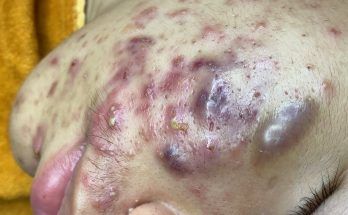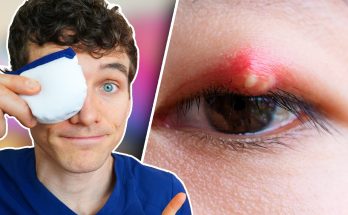Picture this: you wander into your peaceful backyard, admiring the leaves glittering in the morning sun—until you notice tiny reddish shapes crawling around your pots or patio furniture. Your stomach drops. Could it be bedbugs? Internet hacks insist that grabbing a bag of table salt will fix everything. Sprinkle, wait, and watch the pests shrivel.
But here’s the twist—this viral “cure” doesn’t just fail miserably. It can also damage your soil, weaken your plants, and leave the bugs unbothered. This guide breaks down the science, exposes the salt hoax, and shows you the real garden-safe strategies that actually eliminate the problem.
Are Bedbugs Even Garden Pests? A Reality Check
Before jumping into solutions, let’s clear up the biggest misconception. The common species Cimex lectularius rarely survives outdoors. These insects evolved to live in sheltered indoor spaces—beds, baseboards, furniture, luggage—anywhere they can stay close to human hosts and stable temperatures.
Outdoor environments? Bedbugs hate them.
-
Temperature swings reduce survival
-
Direct sunlight kills them quickly
-
Lack of blood meals makes the space hostile
So if you notice brownish bugs on plants or soil, there’s a high chance you’re looking at look-alikes:
-
Boxelder bugs
-
Firebugs
-
Swallow bugs
These mimic the shape and color of bedbugs but behave very differently—and don’t infest gardens the way bedbugs do.
Tip: Always confirm before treating. Real bedbugs have flat, oval bodies, no wings, and move slowly. A clear close-up photo can save your garden from unnecessary treatments.
Why Salt Completely Fails Against Bedbugs
Salt works on slugs and snails because their soft, unprotected bodies lose moisture rapidly. Bedbugs, on the other hand, come armored.
Here’s why salt is useless:
1. Their exoskeleton is built for survival
Bedbugs have a thick, waxy outer shell that prevents dehydration. Salt doesn’t penetrate or dry them out.
2. They don’t eat plant material or minerals
They feed only on blood. Salt doesn’t attract or poison them.
3. Eggs remain untouched
Even if salt bothered the adults, the eggs—tucked away in cracks—stay safe.
4. Salt harms your garden
Overapplying salt leads to:
-
Root burn
-
Stunted growth
-
Nutrient imbalance
-
Reduced beneficial microbes
In other words, the “cure” hurts the garden more than the pest ever could.
Lab studies confirm salt has zero real impact on bedbug populations. Social media makes it sound miraculous; science says otherwise.
Proven, Garden-Safe Bedbug Solutions That Actually Work
If you truly identify bedbugs outdoors—or want to eliminate look-alike pests—these natural, effective methods will help.
1. Diatomaceous Earth: The Mechanical Assassin
Food-grade diatomaceous earth (DE) is a top-tier tool for gardeners. Though soft to the touch, DE is made of fossilized algae with sharp microscopic edges.
When insects crawl through it, it scratches their exoskeleton, causing slow but certain dehydration.
How to use it safely:
-
Dust a light layer around pots, furniture seams, and cracks
-
Keep it dry; reapply after rain
-
Avoid breathing it in—use a mask
DE doesn’t taint your soil or harm plants, making it perfect for outdoor use.
2. Heat: Nature’s Chemical-Free Knockout
Bedbugs die when exposed to temperatures above 120°F (49°C).
Outdoor heat treatment is simple:
-
Place suspect items like cushions in sealed black plastic bags
-
Leave them in full sun for 2–4 hours
-
Use handheld steamers for cracks, crevices, or wooden structures
This kills adults and eggs without chemicals.
3. Vinegar Spray for Quick, Direct Elimination
White vinegar is a powerful contact killer thanks to its acetic acid content.
DIY spray:
-
1 part vinegar
-
1 part water
-
A few drops of dish soap
Spray directly onto pests and wipe away residue to prevent leaf burn. Use on non-edible surfaces or rinse plants afterward.
For extra repellent power, add essential oils like lavender or tea tree.
4. Repellent Herbs That Beautify and Protect
Some aromatic plants naturally repel bedbugs and similar pests:
-
Lavender
-
Mint
-
Thyme
-
Basil
-
Marigold
-
Catnip
Scatter crushed leaves near vulnerable spots or place small herb sachets inside outdoor furniture. Grow borders of repellent herbs to create a natural shield.
5. Cleanliness: Your First Line of Defense
A tidy garden makes life difficult for pests.
Best practices:
-
Vacuum outdoor cushions and furniture with a HEPA filter
-
Freeze vacuum debris overnight in sealed bags
-
Hose down surfaces with hot, soapy water
-
Inspect weekly under pots, mulch, and patio structures
-
Seal cracks and eliminate clutter like old wood piles
Catch them early and treatment becomes simple.
Understanding Bedbug Biology Helps You Beat Them
A single female can produce 500 eggs in her lifetime. Eggs hatch in 6–10 days, and nymphs mature in weeks. Outdoors their survival plummets, but sheltered spots—like sheds, compost bins, or greenhouses—can extend their life cycle.
Break the cycle by targeting adults, nymphs, and eggs.
Try these add-ons:
-
Double-sided tape traps on furniture legs
-
Commercial bedbug lures for monitoring
-
Healthy soil practices to strengthen plant defenses
Why Avoiding Salt Helps the Environment Too
Dumping salt into your garden affects more than your backyard.
Environmental consequences include:
-
Soil degradation
-
Reduced fertility
-
Harm to waterways and aquatic life
-
Long-term damage to biodiversity
By choosing smarter, science-backed methods, you protect your garden and contribute to a healthier ecosystem.
Final Takeaway: Knowledge Beats Myths Every Time
Salt may be a handy kitchen ingredient, but it’s a disastrous bedbug remedy. It doesn’t kill them, doesn’t stop their eggs, and can wreck your soil. Instead, trust reliable, nature-friendly strategies:
-
Diatomaceous earth
-
Heat treatment
-
Vinegar sprays
-
Repellent herbs
-
Regular maintenance
Your garden is a living sanctuary—protect it with methods that nurture instead of harm. With the right tools, you’ll enjoy a thriving, pest-free outdoor haven for years to come.




